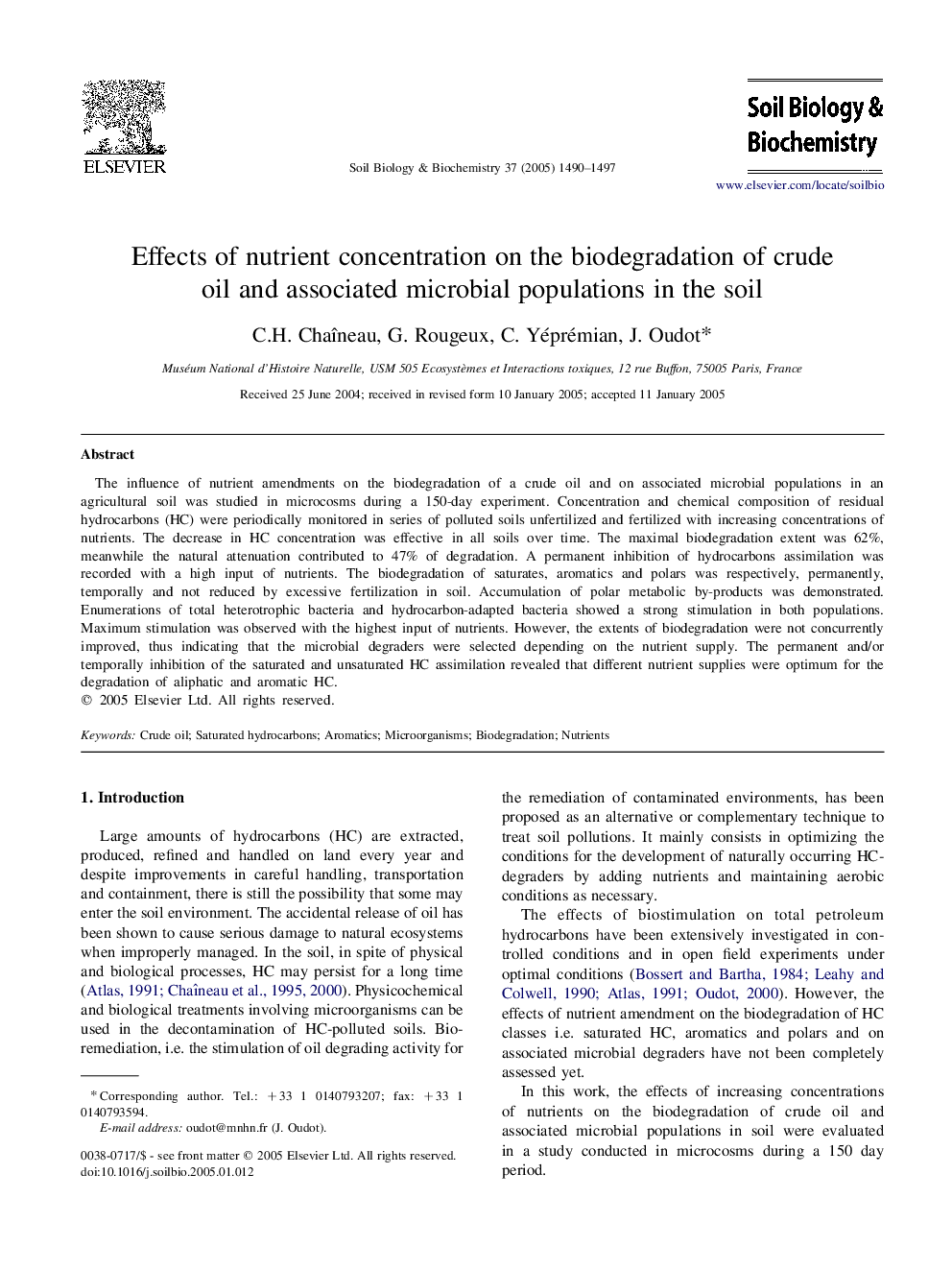| Article ID | Journal | Published Year | Pages | File Type |
|---|---|---|---|---|
| 10846232 | Soil Biology and Biochemistry | 2005 | 8 Pages |
Abstract
The influence of nutrient amendments on the biodegradation of a crude oil and on associated microbial populations in an agricultural soil was studied in microcosms during a 150-day experiment. Concentration and chemical composition of residual hydrocarbons (HC) were periodically monitored in series of polluted soils unfertilized and fertilized with increasing concentrations of nutrients. The decrease in HC concentration was effective in all soils over time. The maximal biodegradation extent was 62%, meanwhile the natural attenuation contributed to 47% of degradation. A permanent inhibition of hydrocarbons assimilation was recorded with a high input of nutrients. The biodegradation of saturates, aromatics and polars was respectively, permanently, temporally and not reduced by excessive fertilization in soil. Accumulation of polar metabolic by-products was demonstrated. Enumerations of total heterotrophic bacteria and hydrocarbon-adapted bacteria showed a strong stimulation in both populations. Maximum stimulation was observed with the highest input of nutrients. However, the extents of biodegradation were not concurrently improved, thus indicating that the microbial degraders were selected depending on the nutrient supply. The permanent and/or temporally inhibition of the saturated and unsaturated HC assimilation revealed that different nutrient supplies were optimum for the degradation of aliphatic and aromatic HC.
Related Topics
Life Sciences
Agricultural and Biological Sciences
Soil Science
Authors
C.H. Chaîneau, G. Rougeux, C. Yéprémian, J. Oudot,
